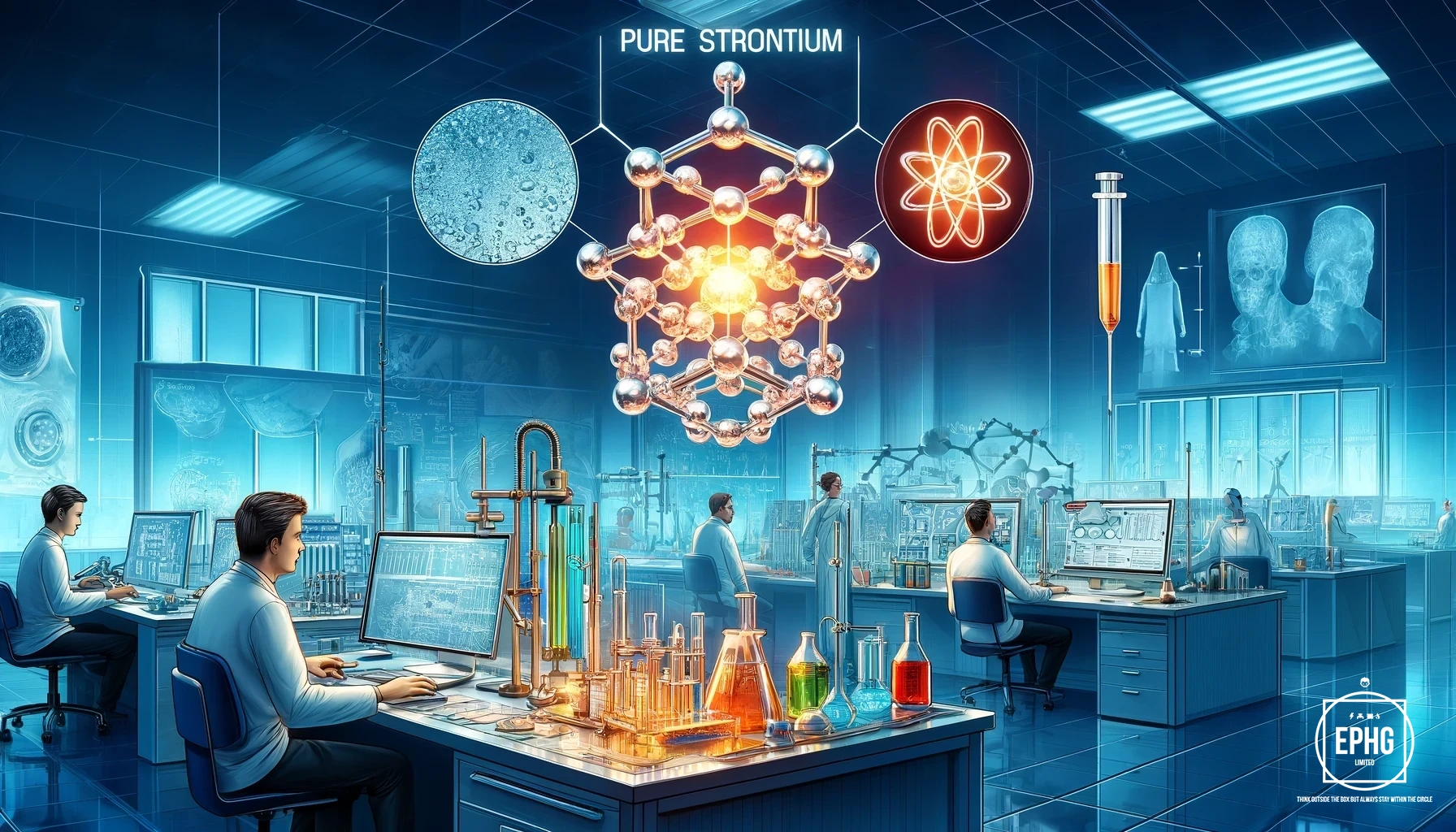Strontium (Sr): Unveiling Its Significance in Science and Industry
Strontium, with the chemical symbol Sr, is an intriguing element that plays a crucial role in both scientific research and various industrial applications. This article explores the comprehensive journey of Strontium, detailing its discovery, unique properties, and its wide-ranging uses in today's technological landscape.
Discovery of Strontium

The element Strontium was discovered in 1790 by Adair Crawford in Scotland, who recognized a new mineral (strontianite) in the ores that differed chemically from other barium minerals. This discovery was made in the village of Strontian, Scotland, which later gave the element its name. Strontium was first isolated by Sir Humphry Davy in 1808 through the electrolysis of strontium chloride. This significant scientific breakthrough demonstrated Davy's pioneering use of electrolysis to isolate metals, a method that he also applied to potassium and sodium around the same time. These milestones marked the element's entry into the world of science and paved the way for further exploration. The isolation of Strontium, followed by the detailed study of its properties and compounds, significantly contributed to the development of chemical science in the early 19th century and helped establish the groundwork for understanding the reactivity and uses of alkaline earth metals.
Strontium in the Periodic Table
Located in Group 2 of the periodic table, Strontium is one of the alkaline earth metals. It shares this group with other elements like magnesium and calcium, characterized by their softness and reactive properties, especially with water. Strontium's position in the periodic table explains its chemical behavior and reactivity, which are pivotal in understanding its interactions and compounds.
Pure Strontium: Properties and Applications

Pure Strontium is a soft, silvery metal that exhibits remarkable properties when free from any alloying elements. It is highly reactive in the presence of air and water, reacting vigorously to produce strontium hydroxide and hydrogen gas. This reactivity is a key consideration in its storage and handling, requiring an inert atmosphere or oil preservation to prevent oxidation. Pure Strontium's luminescence is utilized in a variety of applications, including television faceplates and certain types of visual display units. Its ability to block X-rays also makes it valuable in medical imaging screens. Beyond its physical and chemical properties, Pure Strontium is continually being explored for new uses in technology and industry, demonstrating its versatility and potential in modern applications.
Scientific and Technological Applications of Strontium

Strontium finds numerous applications across various fields due to its distinct properties. In technology, Strontium is used in producing ferrite magnets and in refining zinc, enhancing the quality and performance of these materials. One of its isotopes, Strontium-90, is a potent source of energy and is used in radioisotope thermoelectric generators, which are crucial in space vehicles to generate electricity reliably in environments where solar power is unfeasible. Moreover, the element's luminescent properties make it invaluable in the production of cathode-ray tubes for older television models and computer monitors, as well as in fluorescent lights, enhancing the brightness and efficiency of these devices.

In addition to its technological uses, Strontium plays a critical role in medicine. It is used in the treatment of osteoporosis through its isotope Strontium-89, which targets bone cancer cells to relieve pain and promote healing. This targeted approach not only helps manage pain but also contributes to a higher quality of life for patients. Furthermore, ongoing research explores the potential of Strontium in new therapeutic applications, such as its use in bioresorbable implants, which could revolutionize the approach to treating complex bone fractures and diseases by providing support and then gradually being replaced by natural bone.
Production and Sources of Strontium
Strontium is primarily obtained from the minerals celestite (SrSO4) and strontianite (SrCO3). The extraction process typically involves mining these minerals, followed by methods such as flotation to separate strontium from other elements. Major deposits of strontium are found in China, Spain, and Mexico, where strontium often co-occurs with elements like calcium and barium, reflecting their shared geological formation processes.
Current Uses of Strontium

Today, strontium is used in a variety of applications. In addition to its use in medical treatments for osteoporosis and bone cancer, it is employed in the production of ferrite magnets and in refining zinc. Strontium compounds enhance the color and quality of fireworks and are used in the glass manufacturing for television screens and other visual display units due to their ability to block X-rays.
Future Prospects of Strontium

Looking forward, strontium has promising potential in several innovative fields. Research is ongoing into its use in more environmentally friendly pyrotechnics and as a safe alternative to lead in paints and ceramics. Additionally, advancements in strontium-based materials for electronics and energy solutions, such as improving the efficiency of solar panels, are expected to drive new applications in sustainable technology.
This vibrant image captures a futuristic celebration where strontium-enhanced pyrotechnics light up the night sky over an advanced cityscape. The scene is set in a world where architecture floats and digital skyscrapers dominate the horizon. Hovercrafts and drones weave through the colorful fireworks display, creating a dynamic spectacle of red and vivid colors, showcasing the ongoing relevance of strontium in enhancing cultural and festive events in a technologically advanced society.












